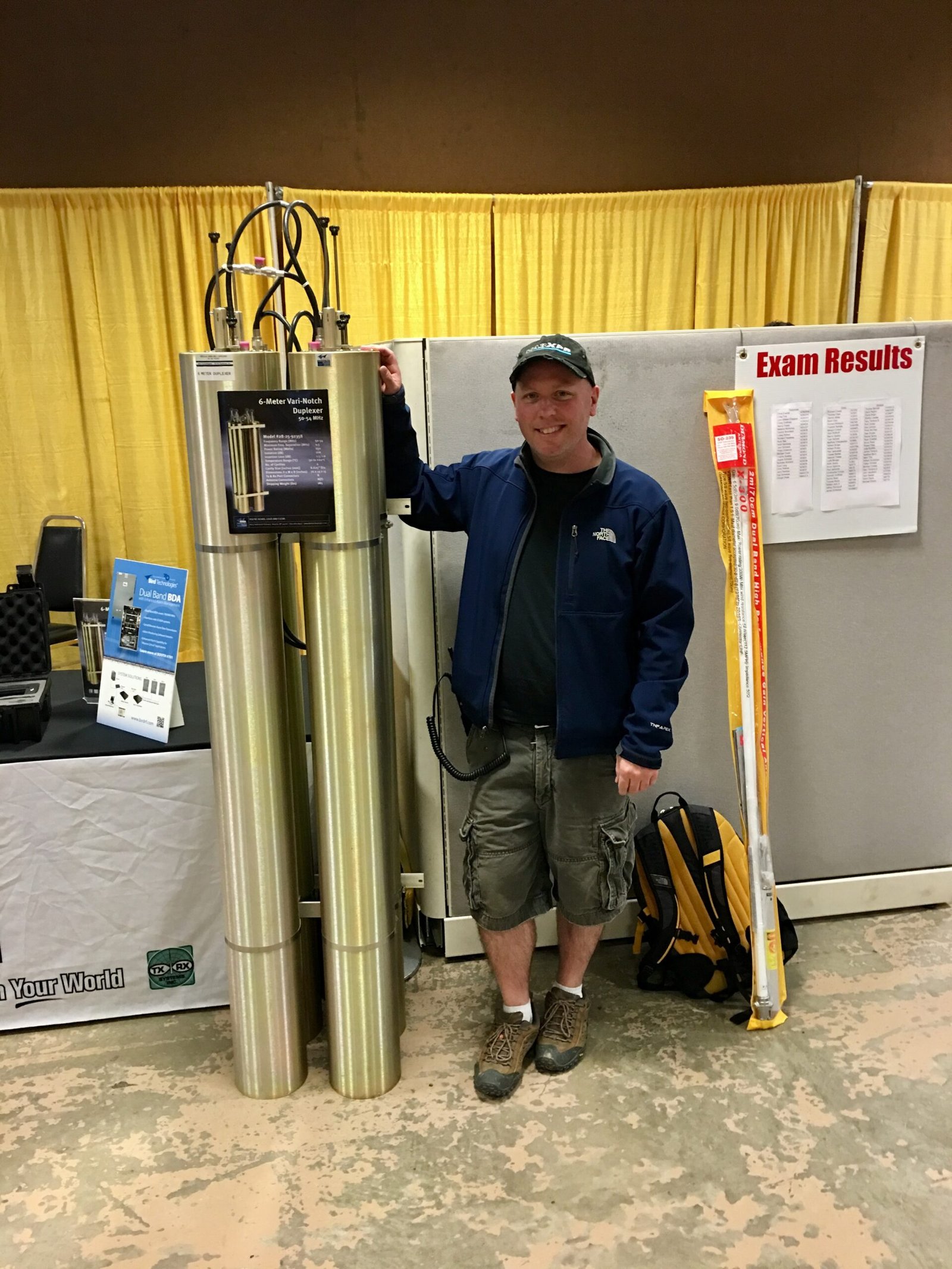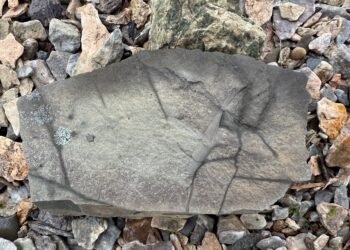Dreaming of your next ham radio vacation? This guide takes you across 10 unforgettable destinations that every operator should add to their bucket list. Whether you’re chasing rare contacts on a remote DXpedition, joining fellow hams at a legendary hamfest, or just combining travel with your love of the airwaves, these spots deliver. I’ll share personal stories from the road, practical tips for operating abroad, and gear advice to make the most of each trip. Whether you’re a contester, casual operator, or serious DXer, these ham radio trips are sure to spark your next radio adventure.
Your Journey to the Top Ham Radio Vacations & DXpeditions
There’s nothing quite like the joy of combining two passions into one unforgettable experience. For ham radio operators, travel opens the door to exciting opportunities: portable stations in exotic locations, world-class hamfests, and rare DXCC challenges. Each destination offers something special, from Tokyo’s bustling electronics scene to the serene RF-quiet zones of the Australian Outback.
As a ham and avid traveler, I’ve explored some of these incredible places myself. Each trip left unforgettable memories, like the lively camaraderie of Dayton Hamvention or the sensory overload of Akihabara. I’ve also dreamed of ventures like Mount Kilimanjaro, where the challenges match the rewards.
This list of top 10 bucket-list ham radio vacation destinations ranked in reverse order, is packed with inspiration. Can you guess which destination claims the #1 spot? Whether you’re drawn to rare DXCC locations or global events, these places promise adventures and connections you’ll never forget.
What is Ham Radio?
Ham radio, officially known as amateur radio, is a fascinating hobby that connects people worldwide through wireless communication. Licensed operators, known as “hams,” use designated radio frequencies to chat with others across town or on the other side of the globe. Whether it’s experimenting with antenna designs, participating in global contests, or providing emergency communication during disasters, ham radio offers something for everyone.
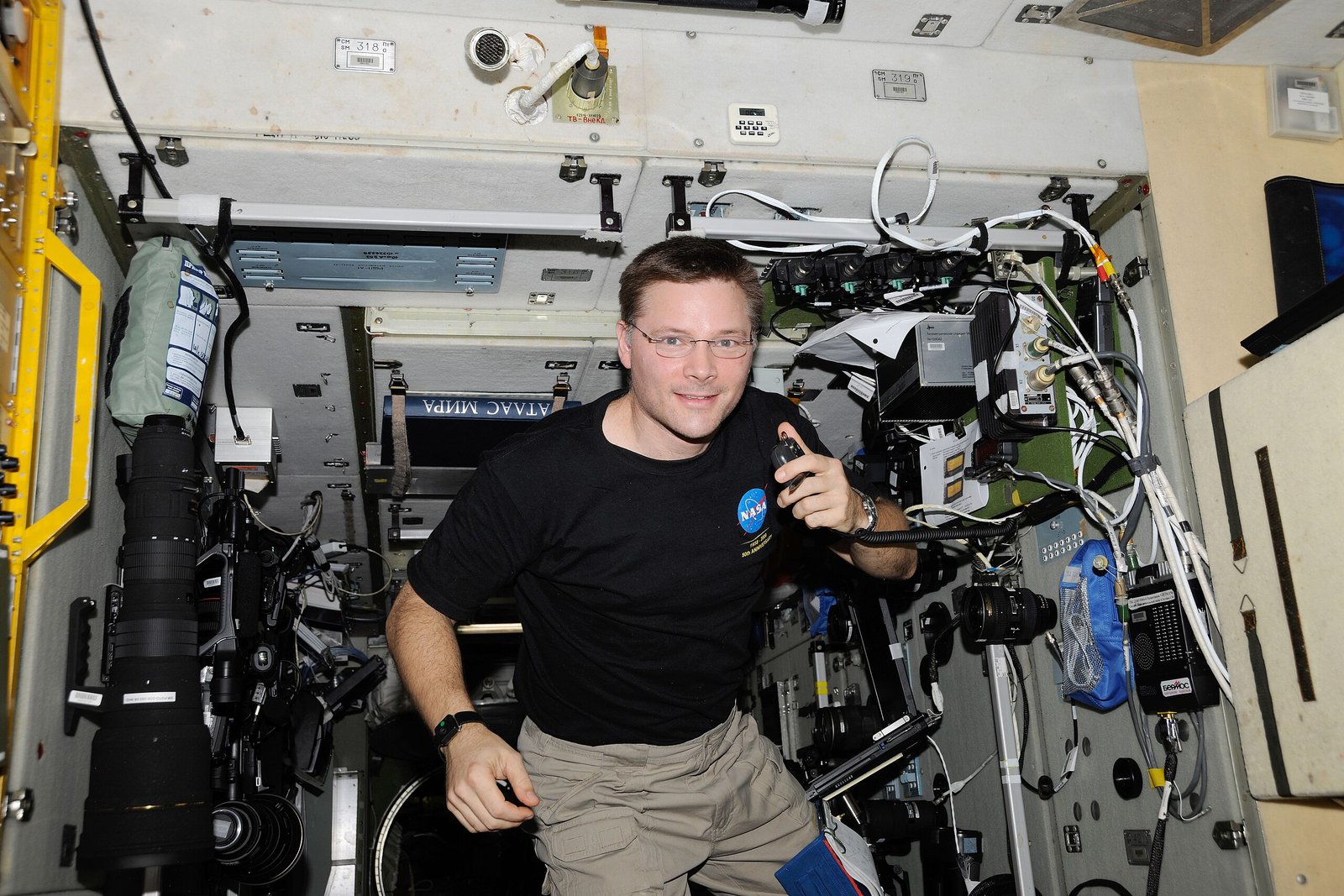
What makes it unique is its blend of science, technology, and community. Hams can build their own equipment, experiment with cutting-edge digital modes, or simply enjoy a casual conversation with someone thousands of miles away. It’s a hobby that combines technical skills with the human connection, making it endlessly rewarding for those who dive in.
Behind the List: How I Chose These Vacation Destinations
When putting this list together, I wanted to ensure it reflected the wide range of experiences ham radio has to offer. Here’s what I considered in choosing these destinations:
- Ham Radio Relevance
Each destination holds significant appeal to amateur radio operators. From iconic hamfests like Dayton Hamvention to rare DXCC entities like Bouvet Island, these locations are tied to the hobby in meaningful ways. - Global Representation
Ham radio is a global community, and I wanted the list to reflect that. Whether it’s the tropical allure of the Caribbean or the Arctic charm of Svalbard, these destinations showcase the worldwide spirit of amateur radio. - Accessibility and Appeal
Some places, like ARRL Headquarters, are easy to visit and perfect for a weekend trip, while others, like Bouvet Island, are rare and extraordinary adventures. I wanted a mix to suit operators of all interests. - Technical and Cultural Opportunities
Many of these destinations offer unique technical opportunities for experimentation, like the RF-quiet zones of the Australian Outback. Others provide cultural enrichment, like Tokyo’s Akihabara, where you can dive into Japan’s vibrant ham radio scene. - My Personal Experience
I’ve been fortunate to visit a few of these places myself, and I’ve included my personal insights to help bring these locations to life. For the rest, I leaned on research, community input, and recommendations from other operators to create a well-rounded list.
This combination of personal experience, research, and community insight led me to these 10 incredible destinations. I hope they inspire your next radio adventure!
Counting Down the Top 10 Ham Radio Vacation Destinations
From remote islands to bustling hamfests, these destinations represent the pinnacle of ham radio adventure. Each one offers unique opportunities to connect with the global amateur radio community, explore rare operating conditions, and make memories that will last a lifetime. Let’s dive into the list, starting with the incredible Australian Outback.
10. The Australian Outback (VK)
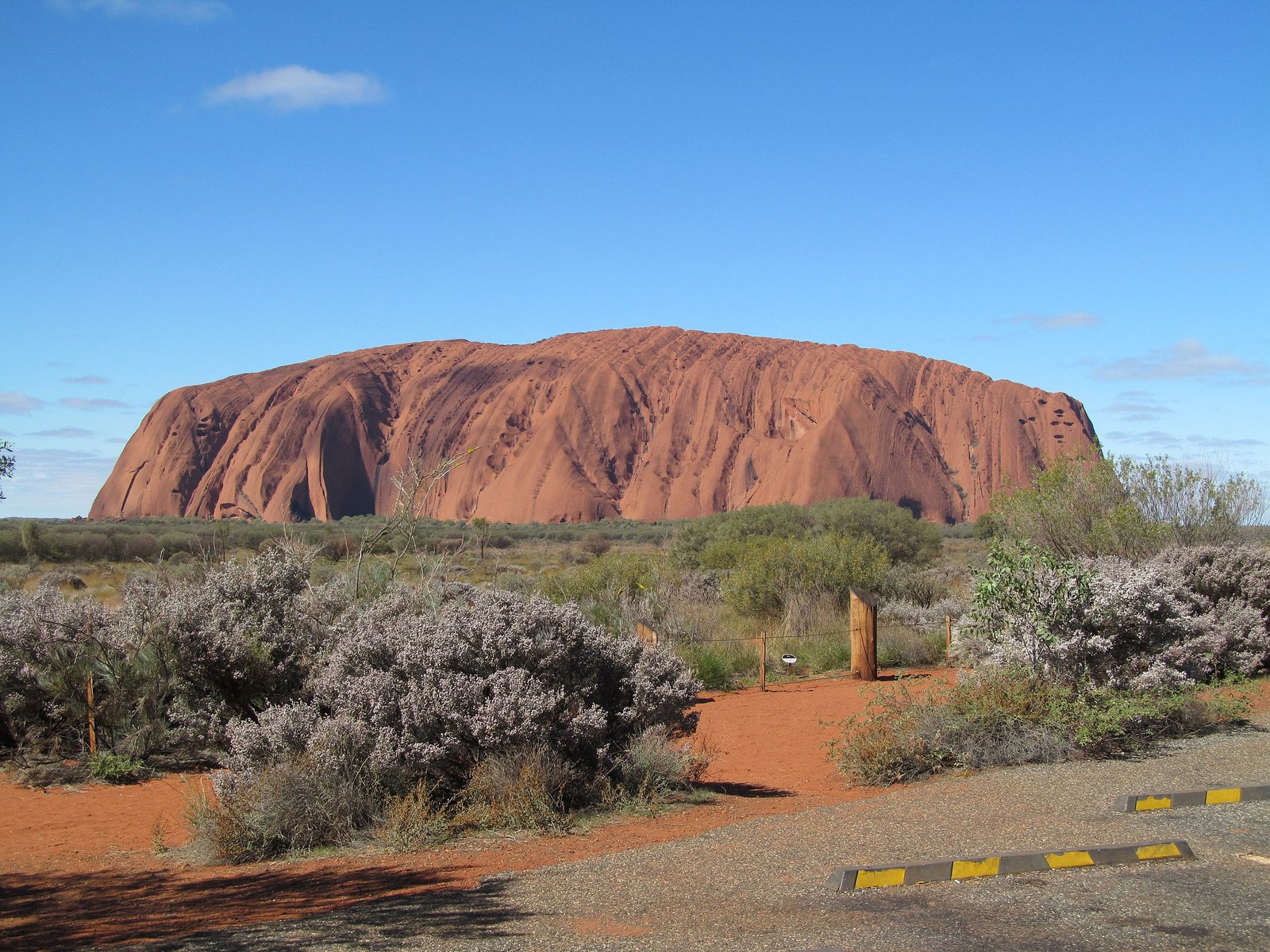
The Australian Outback is a vast, remote wilderness offering some of the quietest RF environments on Earth. Its wide-open spaces, minimal RF interference, and clear skies make it a paradise for ham radio operators seeking solitude and pristine operating conditions. During my two-week trip around Australia, I had the privilege of traveling through the Outback, with Alice Springs serving as my base. Located in the heart of this rugged landscape, Alice Springs was the perfect starting point for exploring iconic landmarks like Uluru (Ayers Rock) and Kata Tjuta (the Olgas).
Even though I didn’t bring any ham radio gear with me on that trip, I couldn’t help but imagine the incredible possibilities of operating in such an RF-quiet environment. The terrain near Alice Springs is hilly, but as you approach Uluru, the landscape transitions to flat, open desert—a dream for hams looking to log QSOs from such a rare and exotic location. Visiting the Outback during a solar maximum would be particularly rewarding, as the ionospheric conditions would bring HF bands alive with global propagation opportunities.
Why It’s Special:
- Operate from the heart of the Outback with stunning desert vistas as your backdrop.
- The region’s low population density and absence of man-made noise are ideal for HF, VHF, and UHF experimentation.
- Stargazing opportunities abound, with some of the darkest and clearest skies in the world.
Pro Tips:
- When to Visit: Plan your trip between May and August to avoid the extreme summer heat. I visited in December, and the temperatures often reached 47°C (116°F), making even short walks challenging.
- What to Bring: Dust-proof cases for your gear and solar panels for remote power.
- Combine Adventures: Visit Uluru to learn about Aboriginal culture, or join a guided stargazing tour to fully appreciate the Outback’s breathtaking skies.
- Cultural Tip: Engage with the local Arrernte people to learn about their history and deep connection to the land.
Why It’s a Must-Visit:
With its unparalleled RF-quiet zones and breathtaking desert landscapes, the Australian Outback offers hams the chance to operate under the stars in one of the most remote and serene environments on Earth. Having experienced this remote wilderness firsthand, I can confidently say that operating here would be a once-in-a-lifetime opportunity for any ham radio enthusiast.
9. Svalbard, Norway (JW)
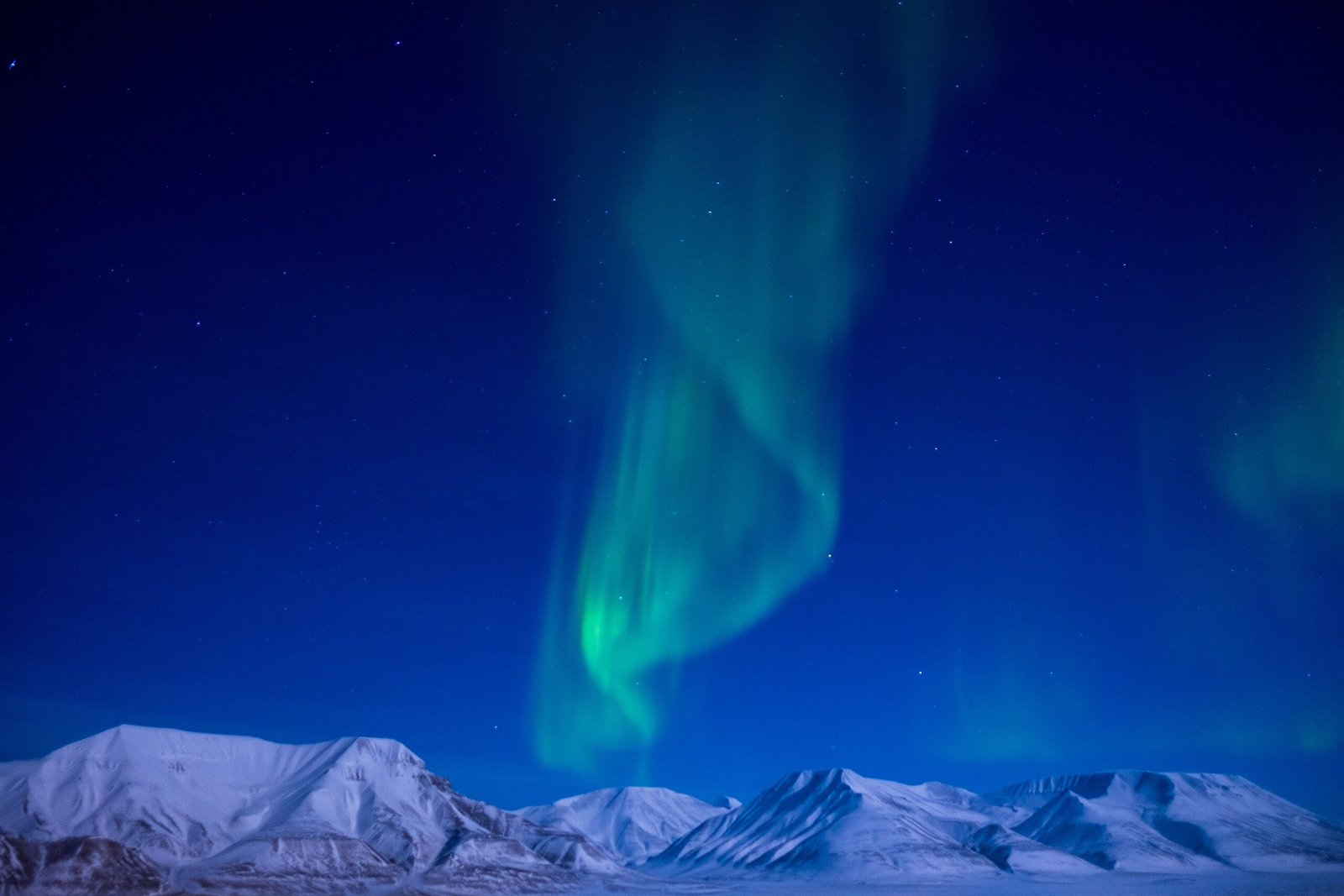
Svalbard, an Arctic archipelago located between mainland Norway and the North Pole, is a dream destination for adventurous ham radio operators. Activating Svalbard’s rare DXCC prefix (JW) offers both a technical challenge and a unique adventure amidst breathtaking glaciers, snow-covered peaks, and Arctic wildlife like polar bears. Its geographic location provides fascinating propagation conditions, especially during solar peaks, when signals can travel remarkably far across the globe.
Why It’s Special:
- Svalbard’s quiet RF environment is ideal for low-noise operations, making it a paradise for DXers.
- The high-latitude location presents unique propagation challenges, with auroral activity adding excitement to HF operation.
- The Midnight Sun in summer and Polar Night in winter create dramatic, unforgettable experiences.
Pro Tips:
- When to Visit: Visit in summer (June–August) for 24-hour daylight or in winter (December–March) to experience the aurora season.
- What to Pack: Bring cold-resistant gear and reliable power solutions for remote operations.
- Licensing: Coordinate with local hams or DXpedition organizers to secure proper operating permits.
- Unique Experiences: Stargaze under the Northern Lights during winter, especially during solar maximums, for a breathtaking Arctic spectacle.
Why It’s a Must-Visit:
Svalbard’s rare JW prefix makes it a prized destination for DXers. The stunning Arctic environment, coupled with the chance to see the Northern Lights, offers both a technically rewarding and visually awe-inspiring experience for ham radio operators.
8. Friedrichshafen Ham Radio Fair, Friedrichshafen, Germany (DL)
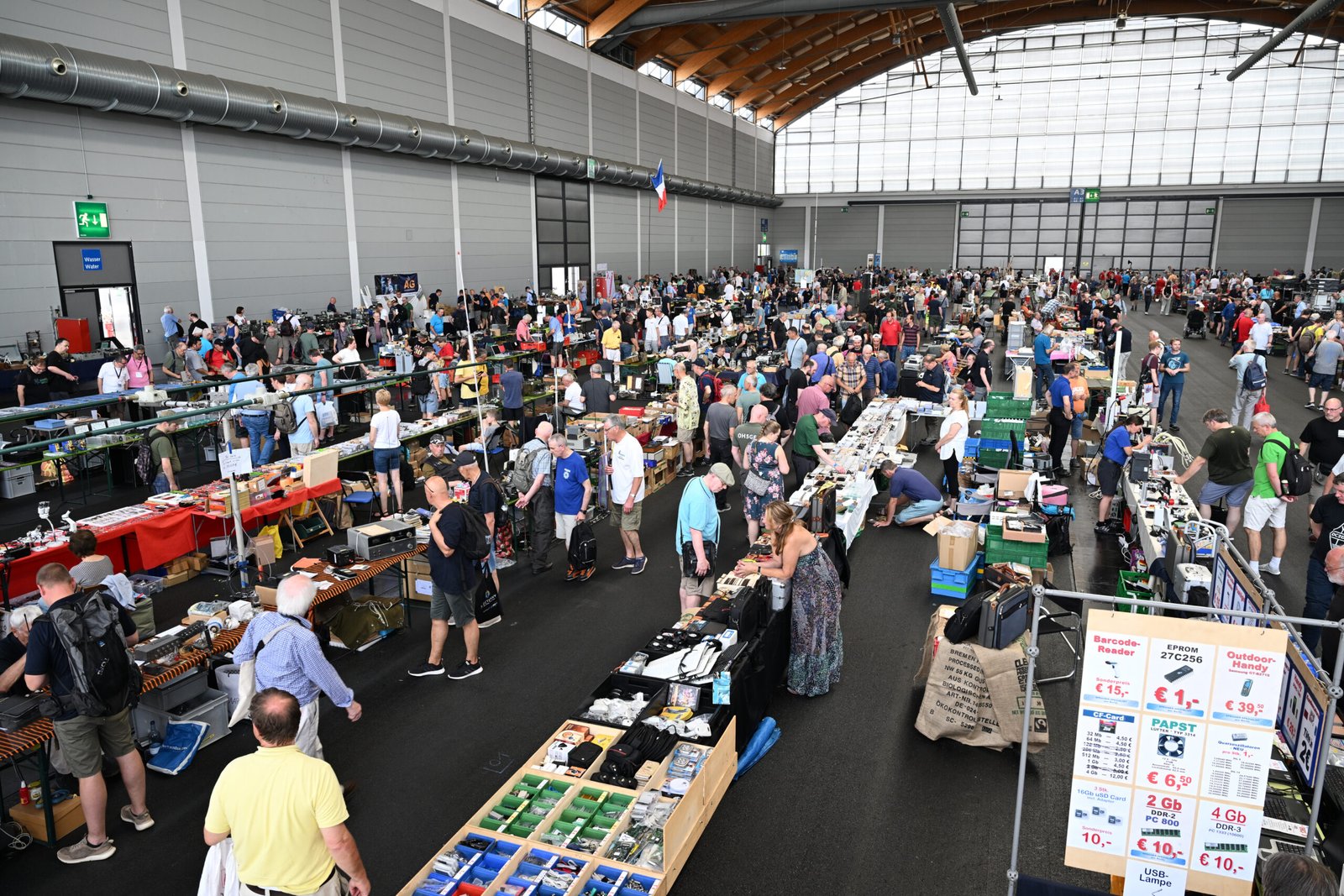
Located on the shores of Lake Constance, the Friedrichshafen Ham Radio Fair is Europe’s largest and most prestigious amateur radio event. Organized annually by Messe Friedrichshafen and supported by the Deutscher Amateur-Radio-Club (DARC), this three-day gathering attracts operators, manufacturers, and enthusiasts from around the globe. Known for its welcoming atmosphere, Friedrichshafen is an exceptional opportunity to learn, network, and immerse yourself in the European ham radio scene.
Why It’s Special:
- Friedrichshafen is Europe’s premier hub for amateur radio, featuring cutting-edge exhibits, workshops, and flea markets.
- Major sponsors and exhibitors include renowned brands like ICOM, Kenwood, Yaesu, and regional manufacturers showcasing their latest innovations.
- Interactive sessions cover topics like software-defined radio (SDR), satellite communication, and emerging digital modes, offering something for every operator.
Historical Context:
- First held in 1976, the Friedrichshafen Ham Radio Fair has grown into a global event, rivaling Dayton Hamvention in scope.
- It serves as the flagship event for the DARC, Germany’s national amateur radio organization, which plays a key role in fostering amateur radio in Europe.
Pro Tips:
- When to Visit: Late June to early July, when the event typically takes place.
- Planning: Book accommodations in Friedrichshafen or nearby towns early, as hotels fill up quickly during the fair.
- What to Bring: A notebook for workshop notes and a shopping list—you’ll find rare and unique items that are hard to resist.
- Local Experiences: Extend your trip to explore the scenic Lake Constance area, including boat tours and charming medieval towns like Meersburg.
Why It’s a Must-Visit:
Friedrichshafen isn’t just an event; it’s a celebration of the ham radio community in a picturesque setting. Whether you’re shopping for vintage gear, attending hands-on workshops, or connecting with other operators, it’s an experience every ham should have at least once.
7. JARL Ham Fair, Tokyo, Japan (JA1)

Officially known as the JARL Ham Fair and often called the Tokyo Hamfair, this is Asia’s largest hamfest and a must-visit event for amateur radio enthusiasts. Organized by the Japanese Amateur Radio League (JARL), the event is held annually at Tokyo’s Big Sight convention center. It showcases the latest advancements in radio technology, serves as a hub for networking, and provides valuable learning opportunities for hams of all skill levels.
Why It’s Special:
- Major Japanese brands like ICOM, Yaesu, and Kenwood often debut new products here, making it a prime destination for tech enthusiasts.
- Hands-on workshops and live demonstrations cater to operators at all experience levels.
- The Hamfair’s international scope attracts participants from around the globe, offering a unique platform for collaboration and idea exchange.
Historical Context:
Since its inception in the 1970s, the JARL Ham Fair has been a cornerstone of amateur radio in Asia. Sponsored by the Japanese Amateur Radio League, the event was created to promote the hobby and foster collaboration among operators. Over the decades, it has grown into an internationally recognized gathering, reflecting Japan’s leadership in radio innovation and culture. Held at Tokyo’s iconic Big Sight convention center, it continues to draw thousands of visitors annually, making it a vital event in the global amateur radio calendar.
Pro Tips:
- When to Visit: The Hamfair typically takes place in late August, so plan your trip accordingly.
- What to Bring: Leave space in your luggage for purchases—radios, accessories, and antennas are hard to resist!
- Combine Adventures: Pair your visit with a trip to Akihabara, Tokyo’s famous electronics district, to explore its endless array of gadgets and ham gear.
- Insider Tip: Visit JARL’s booth for valuable resources and a chance to connect with Japanese ham communities.
Why It’s a Must-Visit:
The JARL Ham Fair is not just Asia’s largest hamfest—it’s a global event that embodies the innovative spirit of amateur radio. With cutting-edge technology, hands-on learning opportunities, and a vibrant international community, it’s a must for any operator seeking inspiration and connection in the world of ham radio.
6. Akihabara, Tokyo, Japan (JA1)

Known as Tokyo’s “Electric Town,” Akihabara is a mecca for electronics and ham radio enthusiasts. During my 10-day trip to Japan, I was fortunate to spend a few days touring Tokyo, and Akihabara was at the top of my must-see list. Visiting in May, I found the area to be an absolute overload for the senses—dazzling neon lights, energetic crowds, and endless shops filled with electronics and ham radio gear.
Akihabara’s bustling district offers everything from transceivers and rare antenna components to hard-to-find vintage equipment. It truly felt like a candy store for hams, with brands like Kenwood, Yaesu, ICOM, and Alinco prominently featured, alongside countless other choices. While I didn’t purchase a radio, I did find a dual-band whip antenna for one of my HTs, which worked great and remains a cherished souvenir of this once-in-a-lifetime experience. Beyond the tech, Akihabara also dazzles with authentic Japanese cuisine—I’ll never forget the incredible ramen and sushi I enjoyed there.
Why It’s Special:
- Home to stores like Akihabara Radio Center, which specializes in ham gear and accessories.
- Offers a sensory overload of dazzling neon lights, bustling streets, and high-energy sounds, especially after dark.
- A unique intersection of technology, pop culture, and traditional Japanese hospitality.
Pro Tips:
- When to Visit: Weekdays are less crowded, making it easier to browse the stores.
- Shopping Tip: Bring a clear list of what you need—Akihabara’s overwhelming variety can be both exciting and distracting.
- Cultural Bonus: After shopping, enjoy authentic Japanese cuisine at a nearby ramen shop or sushi bar.
- Insider Tip: Don’t miss smaller specialty shops tucked away in alleys—they often have rare finds that larger stores don’t stock.
Why It’s a Must-Visit:
Akihabara’s vibrant electronics district is a paradise for hams and tech enthusiasts alike. Whether you’re searching for the latest equipment, marveling at the dazzling energy of Tokyo’s “Electric Town,” or indulging in its world-class food, this destination offers an unforgettable blend of technology, culture, and adventure.
5. Mount Kilimanjaro, Tanzania (5H)

Mount Kilimanjaro, Africa’s tallest mountain at 19,341 feet (5,895 meters), is a dormant stratovolcano and a bucket-list destination for SOTA (Summits on the Air) enthusiasts. Its diverse ecosystems transition from lush rainforests at the base to alpine deserts and barren, snow-capped peaks, offering an unforgettable backdrop for portable ham radio operations. As a UNESCO World Heritage Site, Kilimanjaro combines natural beauty with a unique opportunity for adventure.
Climbing Details:
- Treks typically last 5–10 days, depending on the route chosen. The Lemosho and Machame routes are favored for their scenic beauty and gradual acclimatization.
- No technical climbing skills are required, but proper preparation and acclimatization to altitude are critical to avoid altitude sickness.
- The summit, Uhuru Peak, provides stunning views and the chance to operate from Africa’s rooftop.
Pro Tips:
- Best Time to Visit: Plan your trek for January–March or June–October, when weather conditions are stable.
- What to Pack: Bring lightweight, weather-resistant gear suitable for trekking and portable radio operation. Layered clothing is essential to handle Kilimanjaro’s varying climates.
- Use a Guide or Tour: Kilimanjaro requires local knowledge for safe and successful climbing. Join a reputable tour or hire an experienced guide to help navigate routes, manage altitude acclimatization, and comply with park regulations.
- Combine Adventures: Pair your climb with a safari in the nearby Serengeti National Park or a visit to the Ngorongoro Crater for a complete Tanzanian experience.
Why It’s a Must-Visit:
Activating Africa’s tallest mountain as part of a SOTA expedition is a bucket-list accomplishment for adventurous hams. The breathtaking landscapes, the thrill of summiting a 19,341-foot peak, and the challenge of operating from such an iconic location make this an experience unlike any other.
4. Caribbean Islands (e.g., Aruba P4, Curacao PJ2)
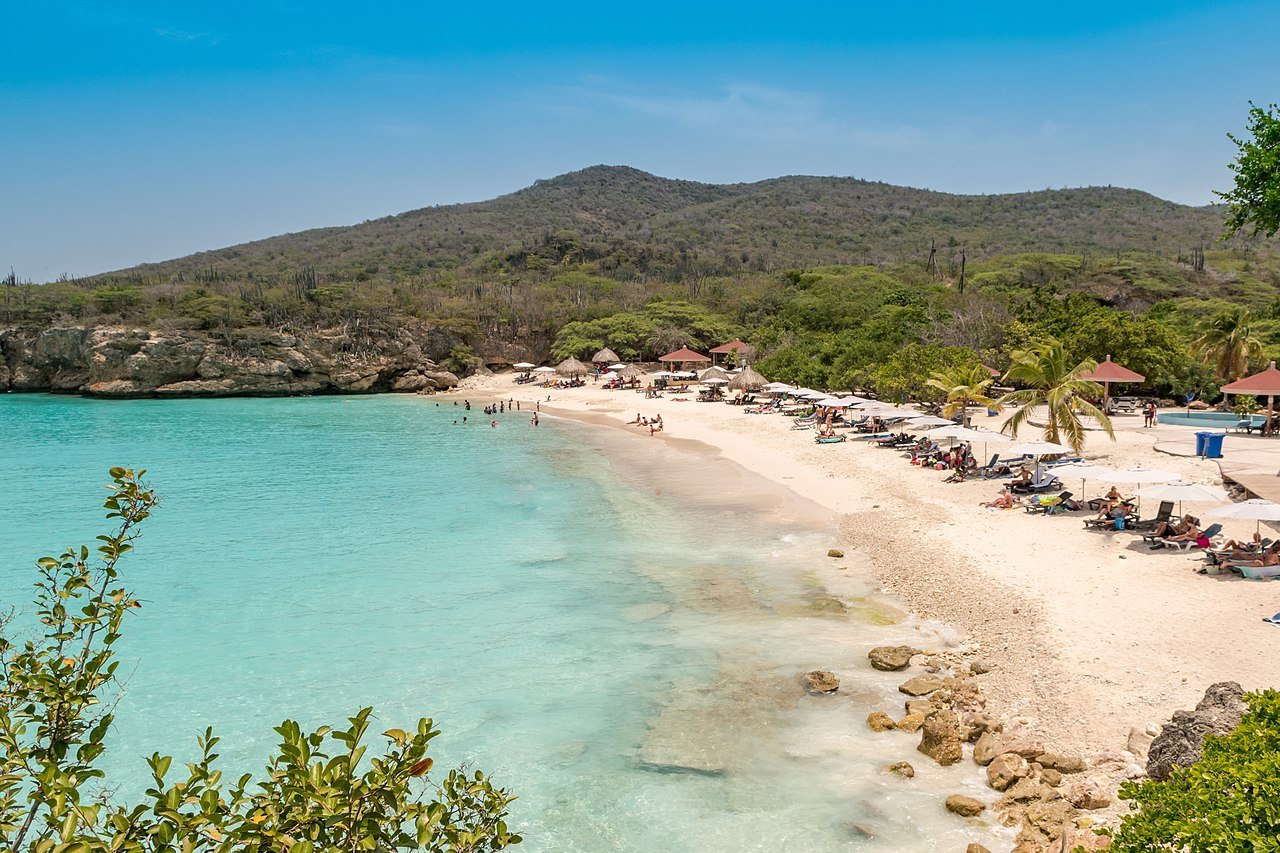
The Caribbean is a paradise for ham radio operators, combining excellent HF propagation with stunning tropical landscapes. Aruba (P4) and Curacao (PJ2) are standout destinations, known for their world-class contest stations and straightforward licensing processes. With pristine beaches, warm weather, and vibrant cultures, these islands offer the perfect opportunity to mix QSOs with relaxation.
Ham Highlights:
- Aruba and Curacao regularly host major international contests like the CQ World Wide DX Contest and the ARRL DX Contest, drawing top operators from around the globe.
- Licensing is simple for visiting hams, with reciprocity agreements making it easy to get on the air.
- Exceptional propagation conditions and minimal noise levels make these islands ideal for DXing.
Pro Tips:
- When to Visit: November–April is the best time, offering cooler weather and a lower chance of hurricanes.
- What to Bring: Salt-resistant equipment to withstand the humid, coastal climate.
- Combine Fun: Between operating sessions, explore vibrant coral reefs while snorkeling, or savor local delicacies like fresh seafood and Caribbean jerk dishes.
- Station Rentals: Look into contest station rentals on both islands to access professional-grade setups for serious DXing.
Why It’s a Must-Visit:
Combining a tropical vacation with world-class HF conditions is a dream come true for hams. With easy licensing, well-equipped contest stations, and breathtaking scenery, the Caribbean offers the perfect mix of relaxation, adventure, and ham radio excitement.
3. Bouvet Island, Norway (Antarctica Region, 3Y)
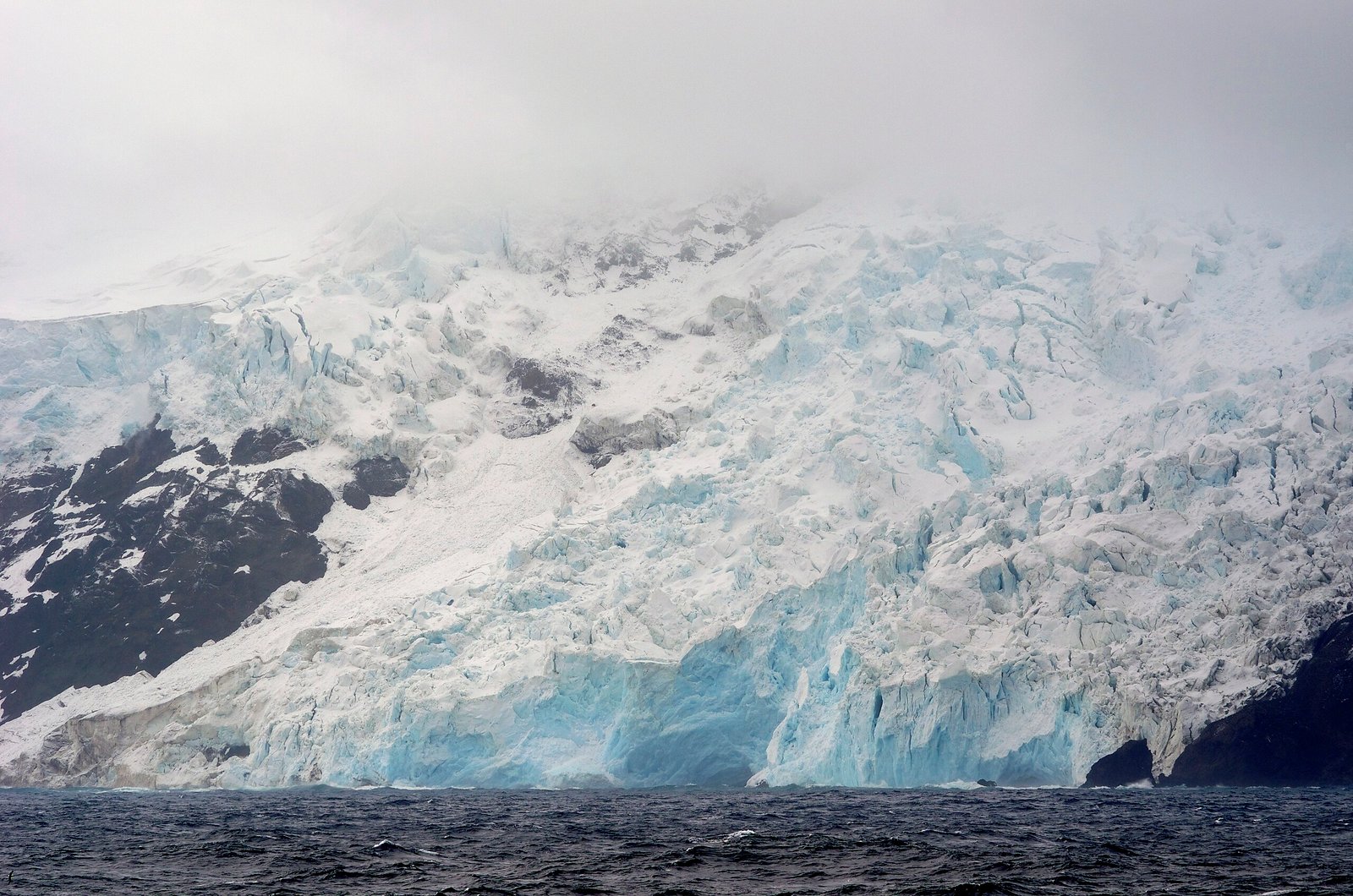
Bouvet Island, located in the South Atlantic Ocean, is one of the most remote and inhospitable places on Earth, earning its reputation as the “ultimate DXCC challenge.” This icy, uninhabited island, surrounded by rough seas and towering glaciers, is accessible only by sea or helicopter. QSOs with Bouvet DXpeditions are among the most coveted in the amateur radio community, making it a dream destination for DXers worldwide.
Facts About Bouvet:
- Bouvet Island is a dependency of Norway, situated about 1,000 miles (1,609 kilometers) north of Antarctica and 1,400 miles (2,253 kilometers) southwest of South Africa.
- The island is entirely covered by glaciers, with steep cliffs making landfall extraordinarily difficult.
- Harsh weather conditions, including high winds and subzero temperatures, make DXpeditions rare and require meticulous preparation.
Pro Tips:
- When to Work Bouvet: Monitor DX clusters during Antarctic summer months (December–February), when most DXpeditions are planned.
- Equipment Needed: High-gain directional antennas and amplifiers are essential to improve signal strength and reliability.
- Remote Participation: Join DXing groups or online forums to stay informed about upcoming Bouvet expeditions and tips for successful QSOs.
- Prep Your Station: Practice pile-up management to improve your chances of breaking through during a rare activation.
Why It’s a Must-Visit:
Operating from Bouvet Island is a badge of honor for any DXer, a testament to enduring extreme conditions for the love of amateur radio. Even if you’re not part of an expedition, successfully logging a contact with 3Y is a once-in-a-lifetime thrill, connecting you to one of the most challenging and remote locations in the world.
2. Dayton Hamvention – Xenia, Ohio, USA (W8 Region)

Dayton Hamvention, held annually in Xenia, Ohio, is the largest hamfest in the world, drawing over 30,000 hams each year. Established in 1952, it has become a mecca for amateur radio enthusiasts, offering an unparalleled mix of flea markets, product launches, and expert-led workshops. Having attended this colossal event several times, I’m always amazed by its sheer size, the incredible variety of gear, and the vibrant community it attracts.
For many operators, Dayton is a bucket-list experience. The sights and sounds of thousands of hams gathering in one place are truly dazzling. The event is more than just a hamfest—it’s a celebration of the hobby, a chance to meet old friends, make new ones, and connect with hams from around the world. Every time I visited, I would make the roughly 7-hour drive from Toronto, Canada, with excitement and anticipation, knowing I’d likely come back with a car full of treasures, from rare finds to cutting-edge equipment.
Event Highlights:
- A sprawling flea market featuring everything from vintage radios and rare antennas to hard-to-find components—you can truly find everything from a tin can to a clap of thunder here.
- Technical sessions on topics such as HF propagation, SDR (Software Defined Radio), and satellite communication, led by industry experts.
- Meetups and networking opportunities with hams from across the globe, fostering a sense of community and shared passion.
Historical Context:
Dayton Hamvention began in 1952 as a small event organized by the Dayton Amateur Radio Association (DARA) to promote amateur radio and bring the community together. Originally held at the Biltmore Hotel in Dayton, Ohio, it quickly grew in size and prestige, moving to larger venues like Hara Arena in 1964, where it remained for decades. After Hara Arena closed in 2016, the event relocated to its current home at the Greene County Fairgrounds in Xenia, Ohio. Over the years, Hamvention has become a global phenomenon, earning its reputation as the premier gathering for hams, with attendees and exhibitors traveling from all over the world to participate.
Pro Tips:
- When to Visit: The event takes place on the third weekend of May each year.
- Planning: Book accommodations months in advance, as hotels in the area fill up quickly. Arrive early each day to secure parking and beat the crowds. Some vendors even camp at the fairgrounds, staying close to their stalls and adding to the vibrant, community-oriented atmosphere of the event.
- What to See: Don’t miss the latest product demos, keynote speeches, and the vibrant social gatherings in the evenings.
- What to Bring: Comfortable walking shoes, as the venue is expansive, and a backpack for carrying your finds from the flea market.
Why It’s a Must-Visit:
As the largest hamfest in the world, Dayton Hamvention offers a unique opportunity to connect with thousands of operators, discover cutting-edge technology, and hunt for rare treasures. The energy, camaraderie, and sheer scale of the event make it an unforgettable experience that every ham should attend at least once.
1. ARRL Headquarters W1AW – Newington, Connecticut, USA (W1 Region)
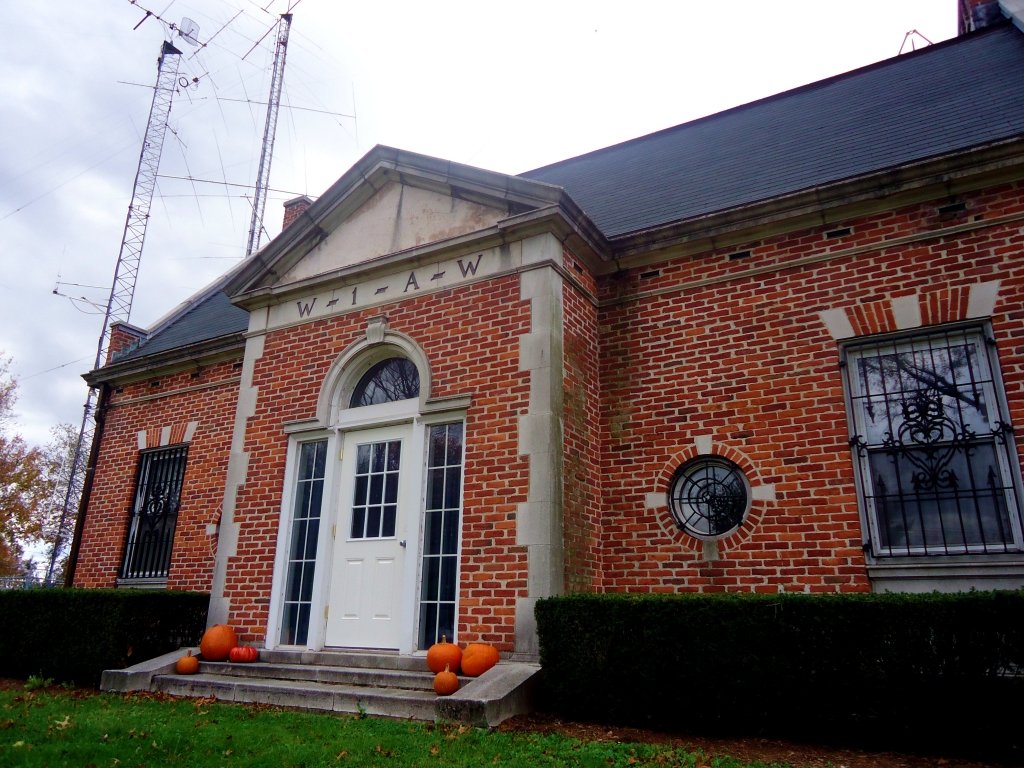
The ARRL Headquarters in Newington, Connecticut, is the heart of amateur radio in the United States. Established in 1914, the American Radio Relay League (ARRL) has been pivotal in advancing amateur radio, providing resources, advocacy, and education to operators worldwide. At the center of this facility is W1AW, the Hiram Percy Maxim Memorial Station, named after the league’s visionary founder. For many hams, visiting W1AW is akin to a pilgrimage, connecting them to the roots of organized amateur radio in America.
Features of W1AW:
- CW Code Practice: Regular bulletins and practice sessions in multiple formats make W1AW a valuable resource for operators of all experience levels.
- Visitor Access: Guests can operate from the world-famous W1AW station, a dream opportunity for any ham.
- Exhibits and Tours: On-site exhibits detail the evolution of ham radio technology, ARRL’s advocacy efforts, and their impact on shaping the hobby’s future.
Historical Context:
Founded in 1914 by Hiram Percy Maxim, a pioneer in communications, ARRL was created to unify and represent amateur radio operators while securing their access to spectrum. The W1AW station, established in Maxim’s honor, serves as ARRL’s flagship station and an enduring symbol of the hobby’s growth. Over the decades, ARRL has championed regulatory protections, offered training resources, and promoted amateur radio globally. Today, W1AW is renowned for its CW practice sessions and is one of the most recognized call signs in the amateur radio world.
Pro Tips:
- When to Visit: Tours are available on weekdays; call ahead to confirm schedules and reserve time to operate the station.
- What to Do: Don’t miss the chance to operate from W1AW’s state-of-the-art station—it’s a bucket-list moment for any ham.
- Combine Adventures: Explore New England’s picturesque countryside. Visit in autumn to enjoy the stunning foliage and seasonal charm.
Why It’s a Must-Visit:
Operating from W1AW is a rite of passage, offering the rare privilege of using one of the most iconic call signs in amateur radio. Beyond the operating experience, the ARRL Headquarters provides a window into the rich history and evolution of the hobby, making it a must-visit destination for hams worldwide.
Looking Ahead: Your Next Ham Radio Vacation
Whether you’re a seasoned operator or a curious newcomer to the hobby, these destinations offer unique opportunities to learn, connect, and grow as a ham. From the snowy extremes of Bouvet Island to the bustling energy of Dayton Hamvention, every location on this list holds a special place in the world of amateur radio.
I’ve been fortunate to explore a few of these places myself, and I hope this guide sparks your own ham radio adventures. Who knows, maybe I’ll catch your call sign on the air someday from one of these incredible locations! You can also check out my ham radio profile on QRZ.
